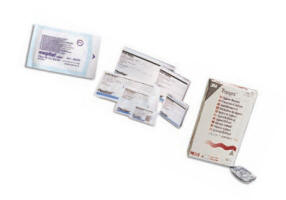|
Wound Care Now letís move on to wound care supplies.
1. 2nd or 3rd degree burns; 2. Surgical wounds that must be left open; 3. Infected open wounds, induced by trauma or surgery; 4. Wounds associated with complicating metabolic, vascular, or pressure factors; 5. Open or closed wounds complicated by necrotic tissue and eschar, or; 6. Wounds that have additional factors which complicate normal healing, such as subcutaneous fluid and blood collections that require specialized drains or devices.
Medicare covers many wound care and surgical supplies, assuming there is a determination of medical necessity. Among these are Group 1 and Group 2 Support Surfaces (or Pressure Reduction Systems). Pressure reduction mattresses and overlays are surfaces that reduce pressure on the skin to below those found with standard hospital mattress type surfaces (130-160 mm hg). Pressure reduction surfaces have interface pressure between 30-100 mm hg on average. These products include foam mattresses, gel overlays, air-pressure pads, and water pads. These pressure reduction systems are covered if certain criteria are met, and these are included in your wound care handouts.
Negative Pressure Wound Therapy When a stage III or IV pressure ulcer, or other qualifying wound, is present, negative pressure wound therapy is covered. Negative pressure wound therapy uses a powered wound suction device with specialized dressings for chronic wounds.
Statistics Simple traumatic lacerations are one of the most common reasons for visits to the emergency department.[50] Some of the most common causes of wounds in older persons are pressure and friction.[51] |



 Medicare
covers wound care equipment and supplies for the following
types of wounds:
Medicare
covers wound care equipment and supplies for the following
types of wounds: